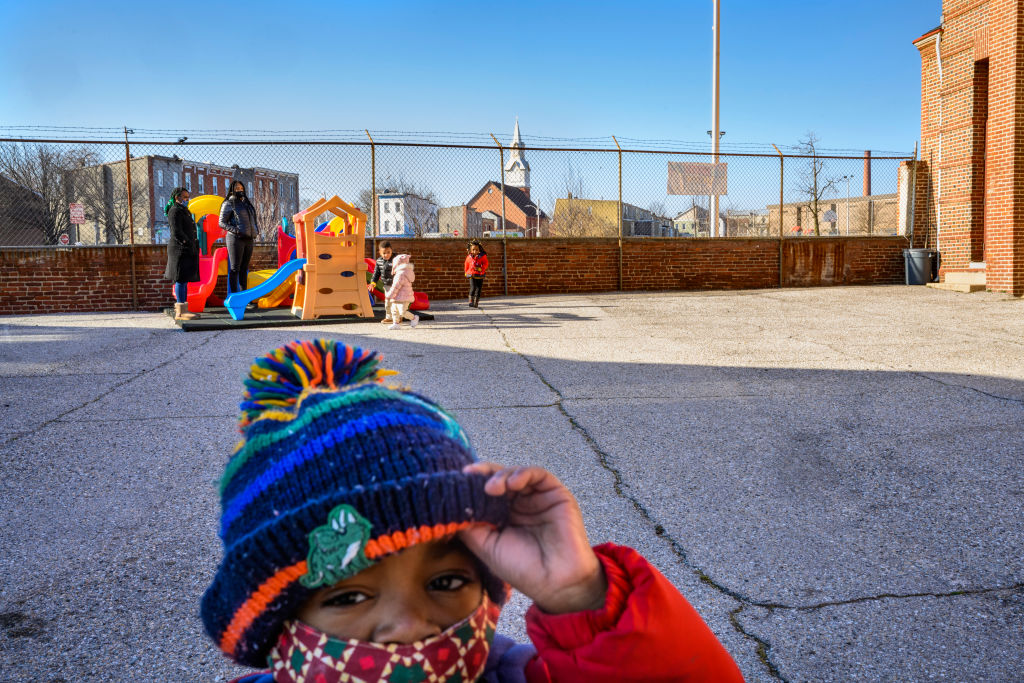
On Sept. 30, Congress let federal childcare stabilization grant funding expire. For providers like Heather in South Carolina and Suzanne in Connecticut, grant funds meant the difference between shutting down and keeping their doors open. Now that we’ve gone over the childcare cliff, 3.2 million children could lose their childcare.
The end of the federal funds was abrupt, but the impact will be felt more like a steady drip, slow roll, or, as one leader called it, quicksand.
First, providers will be forced to raise tuition prices to offset the loss of stabilization grants. Christina Eubanks in Anchorage, Alaska, and Angela Schmitz in Fond Du Lac, Wis., have already raised fees 23 percent and 10 percent respectively, in response to the expiration of stabilization funds, and Schmitz is preparing to raise them another 10 percent in January. Consequently, parents—particularly mothers—are making tough decisions to pay higher prices given the already astronomical cost of childcare or, in some cases, reducing their work hours or quitting their jobs.
Then, staffing shortages—like in Missoula, Mo., where Wild Wonders home-based childcare program has already lost its three employees when the stabilization funds stopped supporting higher pay. They have gone from serving 12 to four children, and are one of the many programs that will be forced to contract—serving fewer children or closing classrooms.
Finally, childcare programs—as many as 70,000 by our projections—will have to shut down altogether.
The good news: If Congress can get their act together to fund emergency childcare before the end of the calendar year, they can stem the worst of these consequences. Despite the high levels of partisanship in Congress, at the last minute, leaders were able to work together to avoid a costly government shutdown at the hands of a few conservative extremists. They must do the same for the childcare sector.
Unlike restaurants and airlines, which also received pandemic-era relief funding, the relief felt by childcare providers merely forestalled what had long been happening in the sector.
“Childcare is a textbook example of a broken market,” said Treasury Secretary Janet Yellen.
Childcare was precarious before anyone had ever heard of COVID-19—yet childcare is as essential piece of infrastructure for parents’ ability to work as the subways or buses they take or the broadband they rely on for Zoom calls.
Leaders were able to work together to avoid a costly government shutdown at the hands of a few conservative extremists. They must do the same for the childcare sector.
The country is also reeling from the decades of undervaluing and underinvesting in care work. Wages in other low-wage sectors, like food services and retail, have risen faster than childcare wages, despite the stabilization funding supporting bonuses, stipends and other temporary wage increases.
Childcare is still down nearly 40,000 jobs since before the pandemic. Without the stabilization funds, TCF estimates that the sector may lose another 232,000 jobs. Early educators—despite their love of working with children—will be forced to find jobs in sectors that pay them better and provide health and retirement benefits.
Some forward-looking states—red and blue alike—have invested their own budgets into mitigating the impact. Alaska, Kentucky, Maine and Minnesota, to name a few, have put money into stabilizing the childcare sector in their states, many by investing in better compensation for the early education workforce. These states saw clearly that federal funding in childcare worked. It stabilized providers (more than 220,000 of them nationwide according to the Administration of Children and Families at HHS), supported the well-being of children, allowed parents to work and enhance their education and training, and helped keep the economy afloat during the pandemic.
But it’s not enough. Members of Congress have called for $16 billion a year through the Child Care Stabilization Act. This is what’s needed in the short-term.
In the long-term, the United States needs to build the comprehensive childcare and early learning system children, families, and our economic prosperity require.
President Biden’s Build Back Better Act that passed the House last Congress included an investment in the care economy that acknowledged how critical care workers and care work is. While it was not included in the Inflation Reduction Act, we’ve had a seachange among elected officials in acknowledging that care workers and care work are essential to our lives and our economy.
Now it’s up to Congress to do right by those workers and invest in childcare.
Up next:
U.S. democracy is at a dangerous inflection point—from the demise of abortion rights, to a lack of pay equity and parental leave, to skyrocketing maternal mortality, and attacks on trans health. Left unchecked, these crises will lead to wider gaps in political participation and representation. For 50 years, Ms. has been forging feminist journalism—reporting, rebelling and truth-telling from the front-lines, championing the Equal Rights Amendment, and centering the stories of those most impacted. With all that’s at stake for equality, we are redoubling our commitment for the next 50 years. In turn, we need your help, Support Ms. today with a donation—any amount that is meaningful to you. For as little as $5 each month, you’ll receive the print magazine along with our e-newsletters, action alerts, and invitations to Ms. Studios events and podcasts. We are grateful for your loyalty and ferocity.





